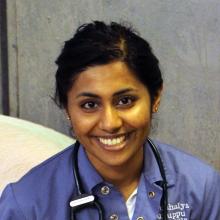It’s a bad day at the office for a swine veterinarian to see sickness in a pig farm that might have been prevented. Often, one sick animal can put hundreds of animals at risk. Given today’s swine health standards, if everything is working according to plan, we hope to see minimal disease in pig barns.
Veterinarians are always trying to balance the epidemiological triad between the host, agent and the environment. In pig medicine, the balancing act also involves nutrition and management of people. What this means is that when something is wrong with an individual animal or a herd of animals, one or more of these elements are out of balance.
Putting it all together looks like this:

Balancing the dynamics between the host, agent and environment along with nutrition and people is essential to swine medicine.
You will notice that people are central to running a successful pig barn and it is the responsibility of the veterinarian to ensure that the people that own, manage and work in the barn are knowledgeable, properly trained and take good care of every pig. It is also their responsibility to ensure that the pigs receive proper nutrition, water and make necessary adjustments. The host, which in this case is the pig herd, differ in their behaviour, genetics, response to disease and affect disease pressure in the barn, which in turn impacts their overall efficiency. This must be balanced with the agent, which means managing the bacteria and viruses that cause clinical disease, drug resistance while implementing disease prevention strategies and maintaining biosecurity. The environment plays a huge role and includes farm size, proximity to other farms, type of housing, pig flow, waste management, ventilation and also contribute to biosecurity.
Maintaining this dynamic balance is a huge task and we appreciate all the farmers and veterinarians that work together to take care of pigs. Thank you for what you do day in and day out to put food on our table!
